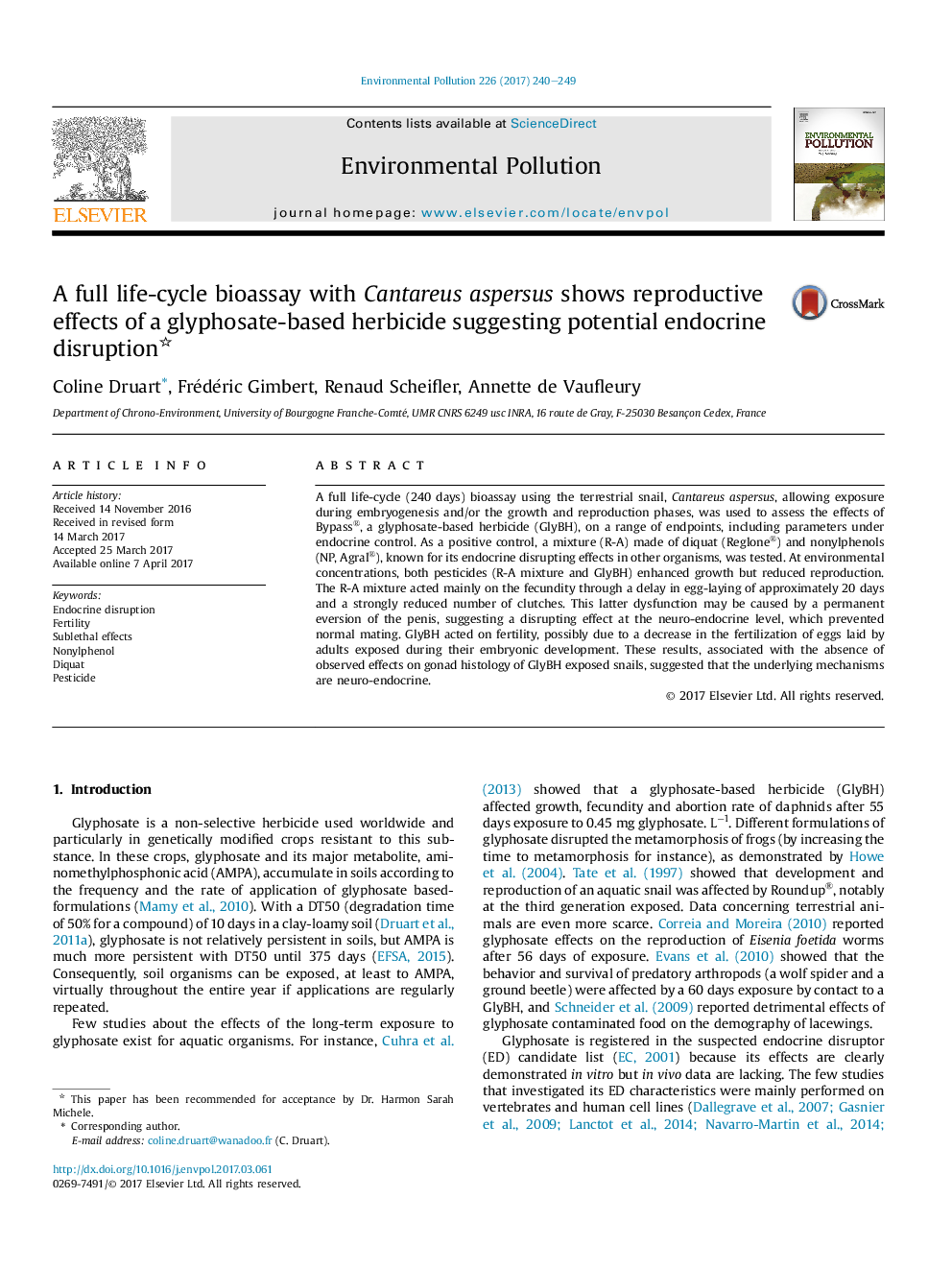| Article ID | Journal | Published Year | Pages | File Type |
|---|---|---|---|---|
| 5749086 | Environmental Pollution | 2017 | 10 Pages |
â¢Land snails were exposed to glyphosate via soil and food during all the life-cycle.â¢Nonylphenol, a well-known endocrine disruptor, was used as positive control.â¢The reproduction was inhibited, particularly the fertility for glyphosate exposure.â¢Mechanisms involved in the effects could be neuro-endocrine.
A full life-cycle (240 days) bioassay using the terrestrial snail, Cantareus aspersus, allowing exposure during embryogenesis and/or the growth and reproduction phases, was used to assess the effects of Bypass®, a glyphosate-based herbicide (GlyBH), on a range of endpoints, including parameters under endocrine control. As a positive control, a mixture (R-A) made of diquat (Reglone®) and nonylphenols (NP, Agral®), known for its endocrine disrupting effects in other organisms, was tested. At environmental concentrations, both pesticides (R-A mixture and GlyBH) enhanced growth but reduced reproduction. The R-A mixture acted mainly on the fecundity through a delay in egg-laying of approximately 20 days and a strongly reduced number of clutches. This latter dysfunction may be caused by a permanent eversion of the penis, suggesting a disrupting effect at the neuro-endocrine level, which prevented normal mating. GlyBH acted on fertility, possibly due to a decrease in the fertilization of eggs laid by adults exposed during their embryonic development. These results, associated with the absence of observed effects on gonad histology of GlyBH exposed snails, suggested that the underlying mechanisms are neuro-endocrine.
Graphical abstractDownload high-res image (277KB)Download full-size image
